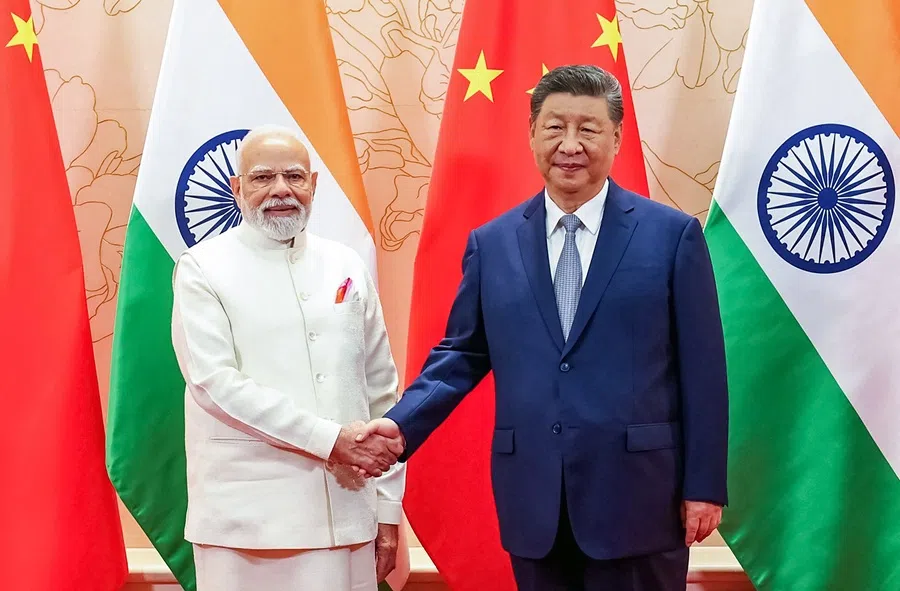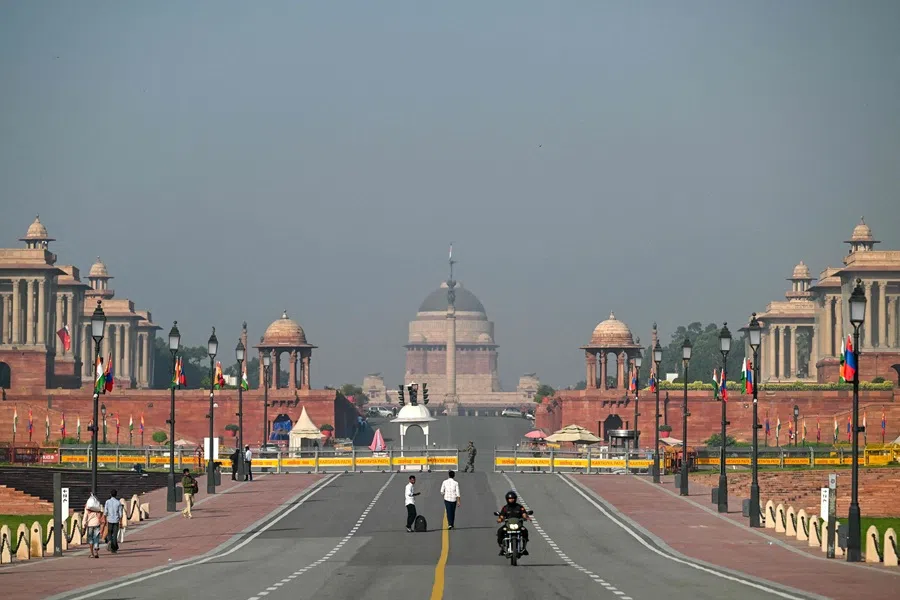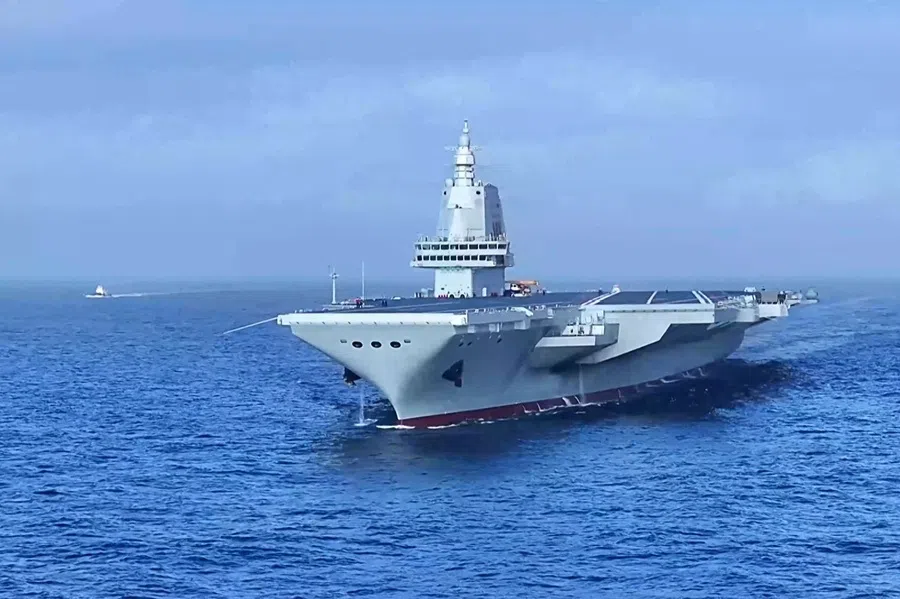Left out of G2: India watches Washington and Beijing
An emerging US-India alliance, invigorated during the Biden administration, now hangs in the balance as Trump tellingly left Delhi out of his Asia tour. Indian researcher Rishi Gupta gives his take on the state of US-India relations.

President Donald Trump’s Asia tour in October 2025 was more than a traditional display of power. It marked a recalibration of the longstanding US alliances in the region, particularly with Japan and South Korea.
Since taking office in January 2025, the Trump administration has made no secret of prioritising transactional value in American foreign policy. As seen in his push for allies to increase their defence budgets to safeguard the region, Trump seemed less concerned with the broader chatter about trade deals with Asian countries than with the actions of his allies; he focused on the outcomes — who offered what.
It is debatable that in almost 11 months, the Trump administration has altered the global geopolitical landscape, including that in Asia, with larger strategic implications for traditional alliances and those that were previously considered reliable, democratic and impactful partnerships. In particular, how has Washington, DC’s foreign policy evolved towards India?
Trump’s approach has fuelled scepticism among the Indian public, raising questions about the durability of these ties.
Delhi’s scepticism of America’s new foreign policy
Not long ago, the leaders of the two countries shared a personal bond and mutual respect for their leadership prowess. During Trump 1.0, India not only became an unalienable part of the America-led Indo-Pacific strategy in countering China but also found an equal or more powerful space in the minilateral alliances like the Quadrilateral Security Dialogue — the Quad — which brought together like-minded countries to engage in dialogue and joint adherence to countering Beijing’s influence. While the Quad did not explicitly project itself as an anti-China grouping, it conveyed enough to Beijing every time the leaders of the Quad countries met for annual summits.
However, so much has changed in less than a year. Under the Biden administration, the US-India partnership was elevated to Critical and Emerging Technology (iCET), where India was not positioned as a country on the receiving end but as an equal partner in shaping the joint efforts in science and technology.
The equation is no longer the same: India, a non-ally ally, has responded firmly to American pressure over trade while simultaneously easing tensions with archrival China, whose relations had been strained since the 2020 border conflict. The thaw could be seen from the Xi-Modi summit in August 2025 in Tianjin on the sidelines of the Shanghai Cooperation Organisation (SCO).

Despite shifts in American foreign policy, India has held fast to its multi-alignment strategy, maintaining historical ties with Russia while navigating the uncertainties of a Trumpian world order. The current US-India partnership shows how a change in leadership can stall even the most promising alliances — what once seemed a solid foundation now faces a tense crossroads. Meanwhile, Trump’s approach has fuelled scepticism among the Indian public, raising questions about the durability of these ties.
There had been expectations that Air Force One might make a brief stop in Delhi, potentially allowing the new Japanese prime minister, Sanae Takaichi, and the Australian prime minister, Anthony Albanese, to join.
Expected stopover in Delhi scuttled; Quad’s integrity questioned
During President Trump’s Asia tour, many in Delhi saw it as a potential opportunity for him to visit India and participate in the Quad Leaders’ Summit, which India is slated to host this year. While September and October were viable windows for the summit, it now seems unlikely to take place.
There had been expectations that Air Force One might make a brief stop in Delhi, potentially allowing the new Japanese prime minister, Sanae Takaichi, and the Australian prime minister, Anthony Albanese, to join. However, with trade negotiations still ongoing and the new US ambassador to India, Sergio Gor, dividing his time between Delhi and Washington, DC, the Quad summit fell out of the calculus — along with any broader projections for advancing the bilateral agenda.
However, pending trade deals are not the only reasons the Quad Leaders’ Summit has not taken place. Actually, it is the larger realignment of the US-China relationship that has sparked some level of pessimism about America’s active role in maintaining the Quad’s integrity.
In Canberra’s quieter corners, there is a growing sense that the Quad is easing off the accelerator as Australia looks to forums that could pull India and other regional players together. And honestly, it rings true — once the US and Japan are not in the room, you’re not really talking about the Quad anymore.
... when the White House clarified that in Malaysia, President Trump did not discuss Taiwan, it left analysts wondering exactly where Washington intends to draw its red lines in the region.

Meanwhile, in all of this, some do dare ask — how much does the US want to project China as its arch rival, especially when President Trump seems to have shifted Beijing from a foe into a competitor category. Also, when the White House clarified that in Malaysia, President Trump did not discuss Taiwan, it left analysts wondering exactly where Washington intends to draw its red lines in the region.
The G2 changes the regional equations
Additionally, many American watchers in Delhi view the China-US realignment as a crucial determinant of how the US defines “like-minded” powers now. Ties with India, Australia and Japan would still find prominence as standalone partners in bilateral relations, because the American view of Beijing is less confrontational and more competitive. The White House’s single post on X — “The G2 WILL BE CONVENING SHORTLY” left many guessing and nervous, including India, but this is not the first time this has happened. In 2009, when President Barack Obama and Hu Jintao jointly reaffirmed their commitment to regional stability, it prompted Prime Minister Manmohan Singh to seek security guarantees from the US.
While India may still want to believe in the importance of the US in its strategic calculus, it has not abandoned its traditional alliance with Russia. Even President Trump’s repeated warnings to India against purchasing Russian oil have not deterred Delhi, which is scheduled to host the Russian president later this year.
Watching Washington
But that is where the observers of India’s foreign policy often get mistaken. For Delhi, each superpower brings in a different value. Russia is a longstanding defence partner, while the US has become a new consumer of India’s defence exports, and ASEAN countries are seen as contributing significantly to Delhi’s trade volume. No one should expect a developing country like India to view global geopolitics through the prism of a zero-sum game.
And those who wish India to be one with the US, Delhi is always cautioned by a US that also views Pakistan as a strong ally, making it reconsider American reliance on regional issues. Since the India-Pakistan war in May this year, which the US claims to have brokered peace for, Pakistan’s chief of army has been hosted twice by President Trump. The unusual outreach has raised eyebrows in New Delhi, prompting a careful read of Washington’s moves.
Still, India sees value in staying close to the US, so it is choosing cautious optimism — engaging deeply, but with clear awareness of the shifting US role in Asia, especially in its engagement with China, as well as America’s subregional equation in the Indian subcontinent, which is marked by the increasing relevance of Pakistan in the strategic calculus of the White House.





